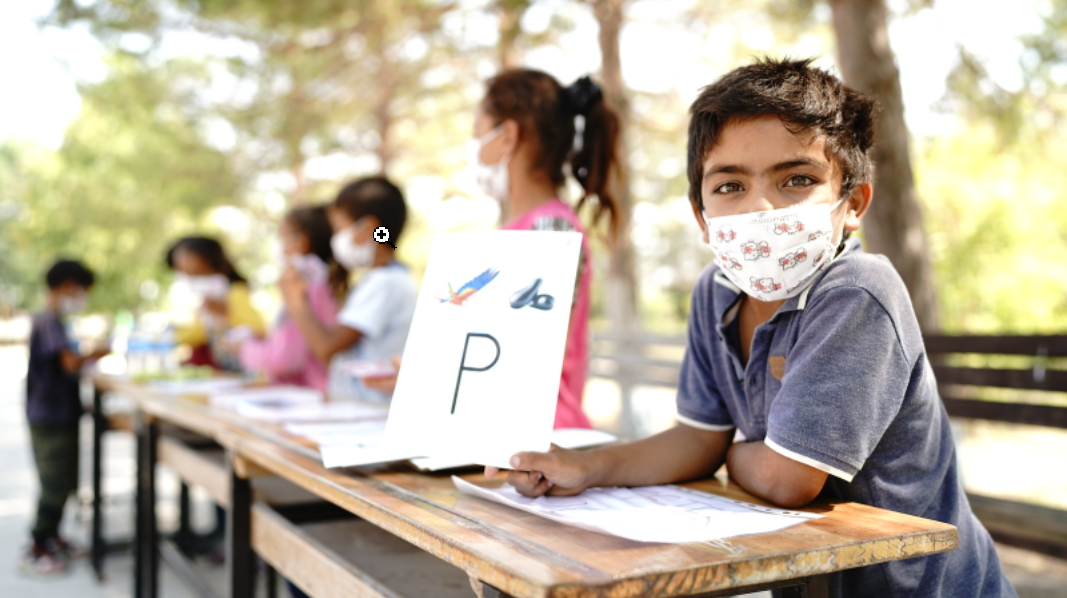5.1 Learning Objectives and Chapter Overview
Kimberly Puttman
Learning Objectives
After reading this chapter, you will be able to:
- Identify barriers to education based on social identity and social location.
- Explain how changes in models of education reflect the social problems process.
- Describe the relationship between education, poverty, and wealth.
- Evaluate the interdependent individual and collective actions that use education to create social justice.
Chapter Overview
With grateful thanks to the intrepid Fall 2021 Sociology 204 students at Oregon Coast Community College. Your willingness to be curious and share your stories makes this chapter sing. —Kim Puttman
https://www.youtube.com/watch?v=DRsWWCq3pRQ

“You’re on mute” may be the most commonly heard phrase in education during the COVID-19 pandemic. This phrase captures the suffering experienced by students and families as they struggled to keep learning during a global crisis.
You probably have stories to tell about how hard it has been to stay in school. Some of you may have a couple of kids in school, with a computer at home that needs to be shared between the three of you, and no internet. You may have struggled to get your six-year-old to wear a mask so that they could go to school, like in figure 5.2. You may have needed physical therapy to succeed at school, but doing therapy online was a poor substitute for in-person care. Some of you needed to quit school for a while so that you could take care of your sick family members. Still others of you graduated high school but didn’t get a chance to have a graduation ceremony or celebrate with family and friends.
For others, school at home became a time in which students flourished because they could learn at their own pace. Students from wealthy families might get better grades because their parents could hire teachers to teach their kids one-on-one. For introverts like me, quarantine had an unexpected benefit. I could focus on creative projects without having to leave home.
Our experience of education during this pandemic also illustrates the interdependence of our educational system. The federal government and state offices made rules about social distancing and when schools could be open. Teachers’ unions advocated for the safety of everyone in our schools. Some of our teachers, cafeteria workers, and school bus drivers staffed food deliveries for our most vulnerable students on school bus routes. Janitors implemented safety protocol after safety protocol. Technology professionals found computers, hotspots, and other tools so we could keep learning. We used individual agency and collective action to create social justice in the virtual classroom.
Each of our COVID education stories is different. As we widen our lens to look at education in our society, we see that education itself can be both a social problem and a response to social problems. In this chapter, we will explore your experience with going to school during COVID-19 so that surface some of the underlying social problems in this area. We expand our understanding of education as a social problem by exploring inequalities in access and outcomes for specific groups of people. To understand why the inequalities exist, we look deeper at the historical and current education models. Finally, we look at how education impacts poverty. To finish our exploration, we end where we started, examining how transformative models of education and closing the digital divide are examples of collective action supporting social justice.
Focusing Questions
Education can be both a social problem and an interdependent solution. The following questions help us to sort out this complex topic:
- How do social identity and social location impact who learns?
- How do the changes in models of education reflect the social problems process?
- What is the relationship between education, poverty, and wealth?
- How can education be an interdependent, transformative method to create social justice, particularly during global health crises?
Let’s start learning!
Licenses and Attributions for Chapter Overview
Open Content, Original
“Chapter Overview” by Kimberly Puttman is licensed under CC BY 4.0.
Open Content, Shared Previously
Figure 5.2. “Photo” by International Labour Organization ILO is licensed under CC BY-NC-ND 2.0.
All Rights Reserved Content
Figure 5.1. “How coronavirus lockdowns disrupted education systems worldwide” by DW News is licensed under the Standard YouTube License.
a social institution through which a society’s children are taught basic academic knowledge, learning skills, and cultural norms
the sum total of who we think we are in relation to other people and social systems
the combination of factors including gender, race, social class, age, ability, religion, sexual orientation, and geographic location that define an individual or group in relationship to power and privilege
the state of lacking the material and social resources an individual requires to live a healthy life
the total amount of money and assets an individual or group owns
full and equal participation of of all groups in a society that is mutually shaped to meet their needs
the systematic study of society and social interactions to understand individuals, groups, and institutions through data collection and analysis
an infectious disease caused by the SARS-CoV-2 virus
the concept that people rely on each other to survive and thrive
the capacity of an individual to actively and independently choose and to affect change, free will, or self-determination
the actions taken by a collection or group of people, acting based on a collective decision
a group of people who live in a defined geographic area, who interact with one another, and who share a common culture
a social condition or pattern of behavior that has negative consequences for individuals, our social world, or our physical world
uneven access to technology due to inequalities between different social, cultural, and economic groups, often caused by location
a state of complete physical, mental, and social well-being and not merely the absence of disease or infirmity

